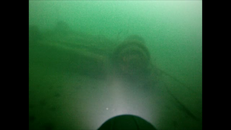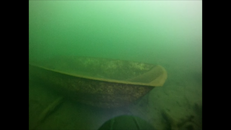I have made it something of a habit to dive undocumented lakes in our region, usually solo, and am currently diving one lake extensively to record it's overall topography (amongst other things). Not knowing your situation, what I do may or may not apply.
I usually dive from shore to a predetermined depth and follow that contour in one direction until I hit my predetermined turn pressure (note the term predetermined), and then backtrack on a (shallower) contour to my starting point. If I am diving the same location I may do this several times at different depths and directions until I get a "feel" for the topography. Like old school wreck divers, I see this as a form of progressive penetration and it works for me. From this starting reference I can then branch out to deeper, longer dives if I want.
Many lakes I dive have very low vis and perhaps the two greatest dangers I see are disorientation and entanglement:
Lake beds may not always slope towards shore the way we think and it is very easy to get completely turned around underwater. One personal example of this was at Pavillion lake where I followed a depth contour that I thought would take me around a small islet. Instead it branched off on a submerged peninsula and I finally surfaced somewhere in the middle of the lake. Long surface swim from somewhere I did not expect to be! Generally though, I dive with a compass and take a bearing before descending so I know which way "in" is. Low vis silt conditions can also sometimes induce vertigo if one fixates on the particles floating by. Don't panic if it happens even though it may be disconcerting - close your eyes and it will pass.
Entanglements are not always rope or fishing line either. In my neck of the woods a major hazard are tree branches that one can swim into in low vis conditions. These can work into hoses or BCD's if you don't catch them quick enough or panic and thrash about. I generally move slowly and at times even sweep my arm in front of me to detect objects before I swim into them though I suggest, if the vis is that bad, you might want to rethink the whole proposition for the time being.
Did I mention predetermined? That should be your guide for the first few dives. Set specific, conservative goals and execute them. As you gain competency, you can set larger, less constraining goals.
Good luck and take it slow...
This video is taken in unusually good vis for this lake, imagine swimming into some of that stuff in low vis conditions... And the question is not what, but who, is in the barrels.
[video=youtube;tmTWlOQjmV4]http://www.youtube.com/watch?v=tmTWlOQjmV4[/video]
Some other stuff I have found:












